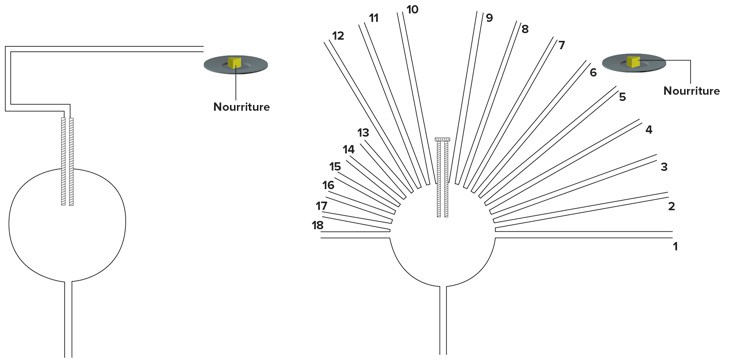Tuesday, 14 September 2021
The great complexity of the brain’s mental mapping system

In the 1930s and 1940s, rats’ ability to learn their way through a maze was explained, according to the behaviourist paradigm prevailing at that time, as simply a process of building connections between sensory stimuli and behavioural responses. When a rat found its way through a maze successfully, it reached the final chamber where it received a reward of food, According to behaviourist theory, this reward strengthened the neural connections underlying the associations that the rat had had to make to complete its task successfully. But this reasoning could not explain the surprising observations made in an experiment by U.S. psychologist Edward Tolman in 1948, in which some rats reached their rewards by finding shortcuts through the maze along paths that they had never taken before!
Here’s how Tolman’s experiment worked. For the first four days, each rat was placed in the maze at the entrance to a path that gave it no choices. As shown in the left-hand diagram above, the rat simply followed this path as it turned left, then right, then continued straight ahead until the rat finally reached a bowl of food. But on the fifth day, this main path was blocked. Instead there were 18 other paths branching off on either side of it, as shown in the right-hand diagram. The rat began exploring some of these alternatives, but then suddenly decided to enter the sixth path from the right, which led it straight to the food!
From these observations, Tolman developed an alternative hypothesis: that the rats were building mental maps of their environment and then referring to these maps to find the best path to reach a given point! According to this new concept of cognitive mapping, even rats’ brains could learn in more complex ways than simply associating stimulus and response: they could also engage in what Tolman called latent learning. Rat brains, and to an even greater extent human brains, are constantly building, storing and using mental maps—models of the world that individuals can revise and adapt as necessary to navigate through complex, changing environments that would often render simple associations obsolete.
Latent learning is a more elaborate form of learning than associative conditioning and lets individuals attain a higher level of cognition. Latent-learning theory opened the way to a whole series of new discoveries. In the early 1970s, for example, John O’Keefe found that certain neurons in the hippocampi of laboratory animals became more active when they were in certain specific parts of their cages, and not in others. O’Keefe hypothesized that the increased activity of these place cells might be giving the animals information about their physical location.
Another example are the grid cells in the entorhinal cortex (in a sense, the entry to the hippocampus), discovered by May-Britt and Edvard Moser in the mid-2000s (they received the 2014 Nobel Prize for Medicine for this work, together with neuroscientist John O’Keefe). Studying brain activity in rats, the Mosers found that certain neurons seemed to become activated wherever the rats were moving around in their cages. But over a longer period, the researchers mapped all the locations that activated such cells and discovered that these locations formed a succession of regularly spaced hexagonal grids, each slightly offset from the other, covering the entire cage. Hence, as a rat moved through the cage, various grid cells were activated in succession as it crossed the intersections of each of these slightly offset grids. The rat could thus record a pathway in its mind, along which it proceeded in a certain direction for a certain distance, then changed direction and continued for another distance, and so on.
These discoveries, and many others, have revealed the great complexity of the brain’s mental mapping system. And the brain’s ability to form mental models of its environment is not limited to physical space. Scientists are increasingly finding that such mental maps are central to what are regarded as high-level faculties of the human brain, from finding physical or verbal shortcuts to making deductions, to engaging in abstract reasoning in general, to planning, to imagining, and even to navigating our social networks as described in an article in the March 2021 issue of the French-language magazine Cerveau & Psycho that was my inspiration for this post.
Memory and the Brain | Comments Closed







